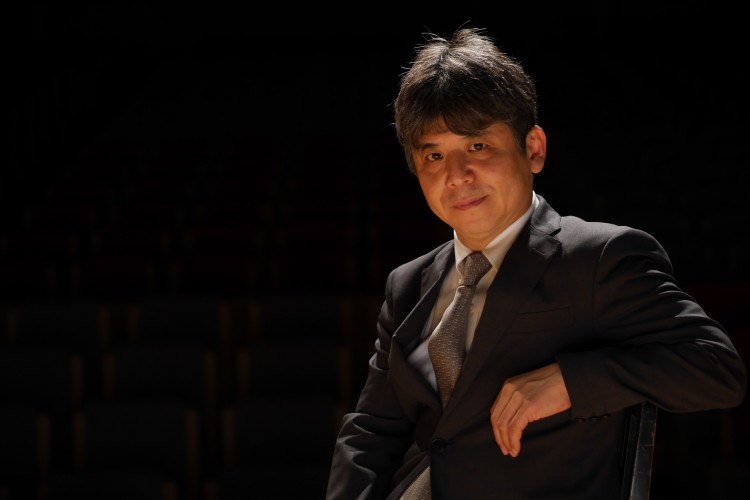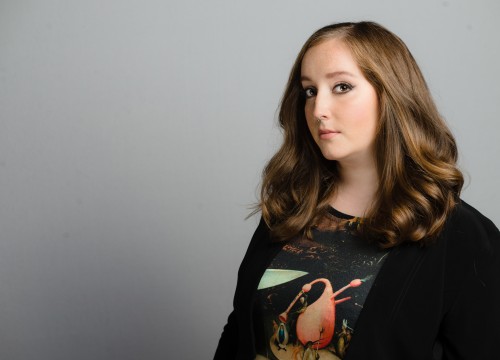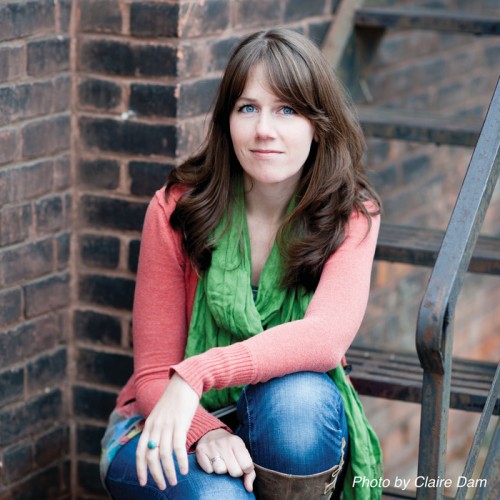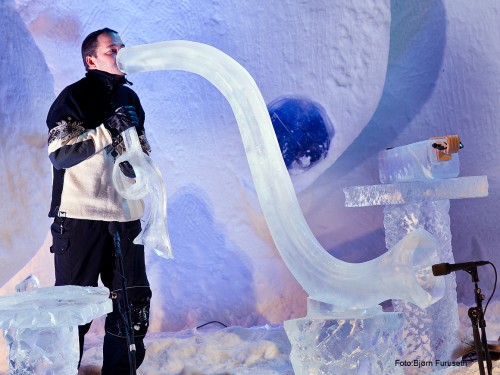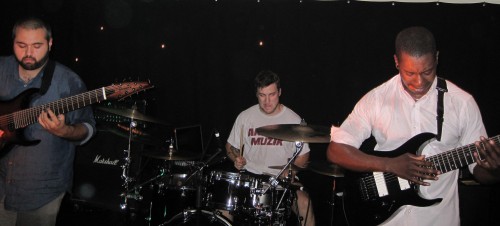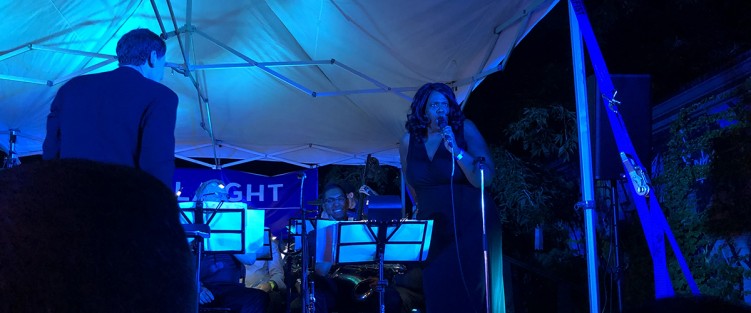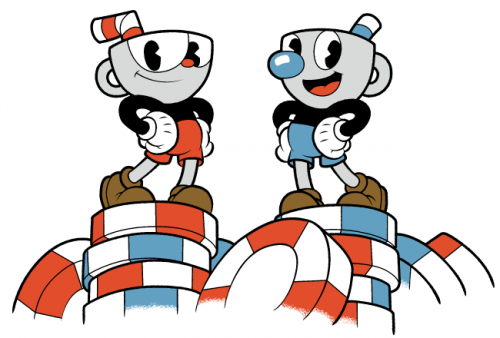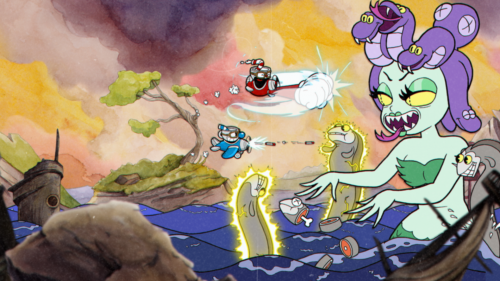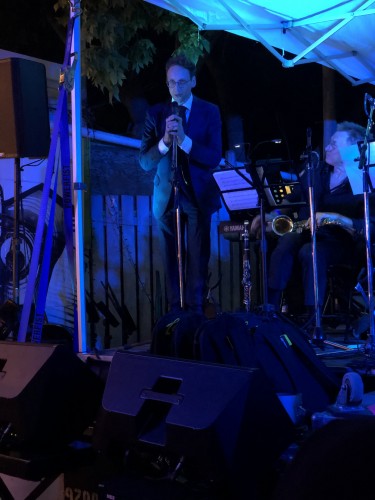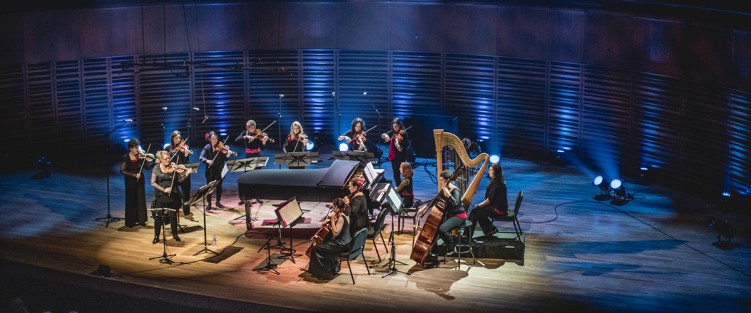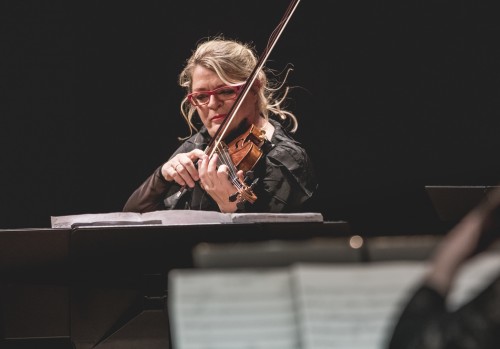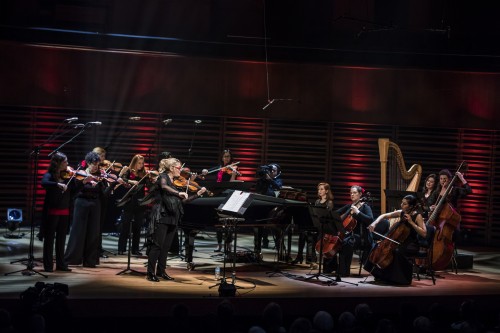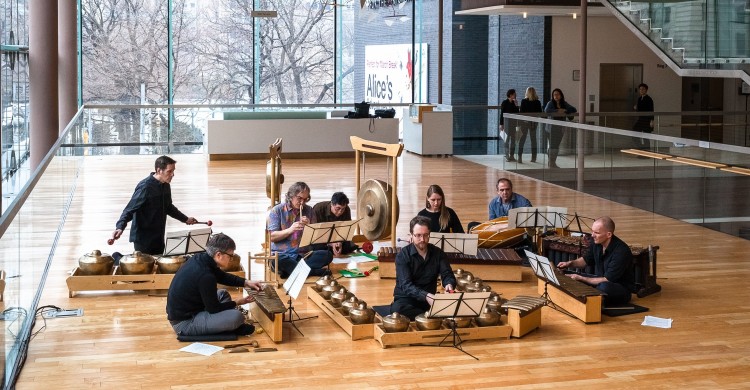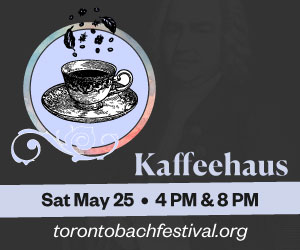University of Toronto Faculty of Music Reaches 100
![Robin Elliott with, left Barker Fairley (1887-1986), Clarinet [Ezra Schabas], 1959, oil on masonite, 101 x 76 cm, University of Toronto Art Collection 1986-052, Purchase 1963-64; and, right Barker Fairley (1887-1986), Flute [Robert Aitken], 1958, oil on masonite, 76 x 101 cm, University of Toronto Art Collection 1986-013, Purchase 1963-64. Photo by Kevin King.](/images/thumbnails/images/stories/2018/11/29/P1040444_cropped-area-750x484.jpg) “A hundred years from what exactly?” we ask, searching for clues.
“A hundred years from what exactly?” we ask, searching for clues.
Our host is Robin Elliott, Professor of Musicology and Jean A. Chalmers Chair of Canadian Music at the University of Toronto Faculty of Music. We (WholeNote managing editor Paul Ennis and I) are sitting in Elliott’s office on the western flank of the Edward Johnson Building (the faculty’s home base since 1962) overlooking Philosopher’s Walk, a meandering path which, at least in theory, connects the U of T Faculty of Music to the Royal Conservatory of Music, a couple of hundred metres (or yards as the Faculty’s founders would have called them) to the north. Reason for our visit is to find out more about the Faculty’s proclamation of 2018/19 as its 100th anniversary.
“Aha!” says Elliott. “Good question. A hundred years from the date of the first faculty council meeting. In June 1918, the U of T actually decided to set up a faculty of music. Prior to that there had been music degrees awarded at the university, dating back to the middle of the 19th century, but those were offered by examination only, there was no instruction in music given in the University of Toronto. So I guess it’s the 100th anniversary of music instruction in the university.”
And the specific impetus for the decision? “Post-World War One?” Elliott replies, although it sounds more like a question than an answer. “Restructuring of cultural life in Canada, I suppose, and at the university? There was a number of mostly British organists around that had an interest in setting up shop at U of T, so they met together with the university president, over at University College – June 1918.”
There were no courses offered by the new faculty, at the start and for a good while after that. “What they offered were set lectures that may or may not have been helpful in writing the exams for getting a degree. But gradually in the course of the 1930s and 40s it shifted towards a more familiar kind of course-based instruction. You could take a course rather than just attend lectures. Smaller groups. And you registered at the university rather than just paying a fee.”
Composer and teacher John Beckwith has spent a large part of his working life associated with the U of T Faculty of Music, including attending as a student in the years between the two World Wars, a subject he addressed in a series of two lectures at Walter Hall, bracketing the Faculty’s 75th anniversary in 1993, and subsequently gathered into a small book called Music at Toronto: A Personal Account.
“Taking a bachelor’s degree in music at Toronto in the 30s and 40s was as thoroughly English an experience as could be found anywhere in Canadian university life of the period,” Beckwith writes. “Thursdays you went in threes and fours to Healey Willan, who blew pipe smoke at you, told witty anecdotes about English notables of the turn of the century and called you ‘old man.’ Mondays you went in similar small convoys to Leo Smith, who stroked his white pencil-line moustache, caressed the piano keys, and called you ‘dear boy’.”
Elliott laughs, appreciatively. “There were only three people in the faculty for decades” he says. “Ernest MacMillan, who was the dean from 1926 to 1952, and those two: Healey Willan and Leo Smith. Smith was actually a cellist and composer, Willan an organist and composer, teaching these small classes and that was it; just the three of them running shop for no more than 40 or 50 students till after the [Second World] War.”
Just as the end of WWI provided some kind of spark for the founding of the Faculty; WWII changed it forever. “From 1945 all the way to 1962 there were a lot of returning soldiers, a huge influx of military getting their education, in music as in other things. Along with growth of music in schools this sparked an expansion over the course of 15 to 20 years up to 500 students,” Elliott says, along with a corresponding growth in the number of faculty staff, and, as important, in the variety of their musical backgrounds.
“Starting in 1946: Arnold Walter, who was a Czech musician after whom Walter Hall was named came on board, initially to set up opera, and eventually became director of the Faculty. Director, not Dean.”
A slight pause, as though he is wondering how far to allow the conversation to stray up Philosopher’s Walk towards the Royal Conservatory. Then: “Between the Conservatory and the Faculty,” Elliott says, “there’s a whole very complicated administrative history. For a while the Royal Conservatory was the umbrella organization at U of T and underneath that was the Faculty of Music here and the School of Music there. Boyd Neel was Dean of the Conservatory, a kind of referee between the two. Finally, in the 80s they went their own way, as a self-standing institution.”
“With no referee?” we ask. He laughs. “With no referee. Peter Simon running shop over there and Don McLean running shop over here … although we share a lot of faculty members, especially among people teaching instrumental lessons.”
Another pause.
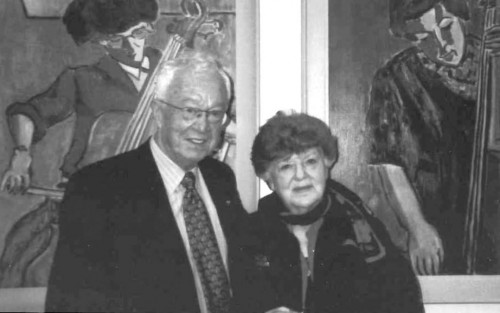 “One of the things we were joking about on the way over,” we tell Elliott, “is that it should be possible to map the history of a venerable institution like this one, by looking at the roles played in that history by the individuals the institution chooses to name its buildings and rooms after. Edward Johnson, Ernest MacMillan, Arnold Walter, Herman Geiger-Torel, Barker Fairley …”
“One of the things we were joking about on the way over,” we tell Elliott, “is that it should be possible to map the history of a venerable institution like this one, by looking at the roles played in that history by the individuals the institution chooses to name its buildings and rooms after. Edward Johnson, Ernest MacMillan, Arnold Walter, Herman Geiger-Torel, Barker Fairley …”
“Ah yes, we shouldn’t forget Barker Fairley! He was, of course, a professor of German and a keen amateur painter. In the Barker Fairley Room there are all these portraits, or ‘faces’ as he liked to call them, of musicians in Toronto, in the 50s and early 60s. I think they are really lovely. Yes, he’s the outlier … the only one who was not a musician.”
We go back to the top of the list: “So, first, why is it the Edward Johnson Building? Obviously he was a famous tenor, director of the Met Opera during the Second World War. Came back to the Toronto area after retiring from the Met. He was on the U of T board of governors as well as on the board of directors of the Royal Conservatory. And his daughter was married to a former premier of Ontario, George Drew. So he was politically well-connected, powerful in the administration. One can draw conclusions. Certainly there are those who think that they should have named the building after Ernest MacMillan and the opera theatre after Johnson, not the other way round. Johnson obviously deserved some recognition for what he helped to set up, in terms of plans for the new building and he died in 1959 while the building didn’t open till 1962, so he didn’t live to see it. He laid the groundwork and clearly deserved some recognition, but maybe not that much.”
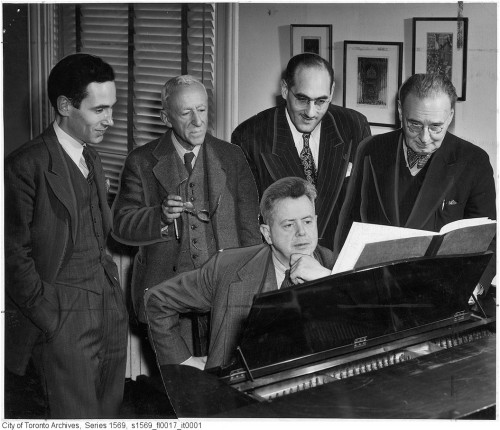 MacMillan’s contribution, on the other hand, was fundamental. “Beyond dispute, really. Dean from 1926 all the way to 1952; we have the MacMillan Theatre, the MacMillan Singers, so that’s something,” Elliott says. Several of MacMillan’s works are being, or have already been, featured in this centennial concert season: “In the first orchestra concert they played his Fanfare for a Centennial, and the overture to England: An Ode which was a big choral and orchestral piece written in prison camp in Berlin in 1918 and earned him a doctorate from Oxford. And we’ll have more of his music in a choral concert later in the season.”
MacMillan’s contribution, on the other hand, was fundamental. “Beyond dispute, really. Dean from 1926 all the way to 1952; we have the MacMillan Theatre, the MacMillan Singers, so that’s something,” Elliott says. Several of MacMillan’s works are being, or have already been, featured in this centennial concert season: “In the first orchestra concert they played his Fanfare for a Centennial, and the overture to England: An Ode which was a big choral and orchestral piece written in prison camp in Berlin in 1918 and earned him a doctorate from Oxford. And we’ll have more of his music in a choral concert later in the season.”
Next on the list, Arnold Walter, whose arrival in 1946 signalled a big change. “He was neither British nor Canadian, the first central European to arrive on faculty, although along with him came Herman Geiger-Torel (the next room on your list!). Geiger-Torel was an opera director, also from Central Europe. Being Jewish he fled from Nazi German occupation, to South America first, then came north in 1948, courtesy Niki Goldschmidt.”
Between the three of them, Elliott explains, they were instrumental in setting up opera here between 1946 and 1948. “The direct result was our Opera Division which initially gave performances at the Hart House Theatre, officially opened the MacMillan Theatre in 1964 with a production of Benjamin Britten’s Albert Herring, and faithfully stages two productions a season, year in, year out.”
As the shadows lengthen across Philosopher’s Walk outside Elliott’s office window, we examine lists of eminent alumni and prominent faculty, and look at the concerts in the season brochure specially marked with a 100th anniversary symbol. The picture that emerges, paradoxically, is of a season that looks very much like last year’s or the year before that.
“Is it fair to say if you’d reached this milestone last year, we could have used last season’s listings to tell the same story?” “Exactly,” he replies. “That is exactly what the Dean had in mind. It’s a year that says here are the things we’re doing, but as a portrait of what we always do. Not a ‘drop everything to celebrate’ thing – more like ‘It’s a hundred years, that’s nice but we have students to teach.”
Business as usual: students to teach (900 of them, now, by 240 fulltime and part-time staff); two opera productions a year to stage; music created by U of T-affiliated composers to nurture and perform (“All the way from Healey Willan to our current students”); concerts to present, by faculty performers and students, ranging from 18 and 19 years old in large ensembles to Phil Nimmons, 95 years old and still teaching; a tradition of chamber ensembles in residence to maintain, going back to the Orford String Quartet, here from 1968 to 1991; a pioneering electronic music studio, launched in 1959, to relaunch, completely refurbished, in time for its own 60th anniversary this coming spring; groundbreaking work in musicology and ethnomusicology, and now music and health, to build on.
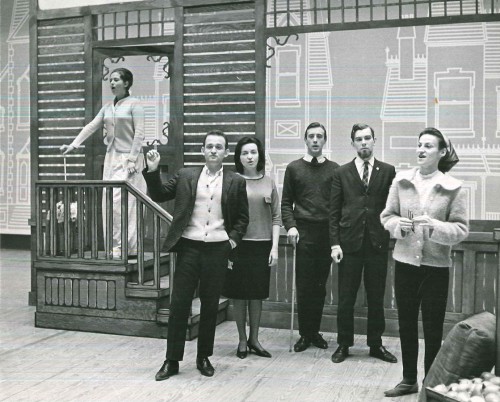 “And for you particularly?” we ask Elliott. “As Director of the Institute for Music in Canada, our work as a custodian of things Canadian,” he replies. “Our rare book room, papers of important musical figures – Kasemets, Beckwith, Nimmons … For a long time, this was the main university for musical education in Canada, our graduates from the forties, fifties and sixties spread out across the map from Memorial University to Victoria. It’s an evolving legacy.”
“And for you particularly?” we ask Elliott. “As Director of the Institute for Music in Canada, our work as a custodian of things Canadian,” he replies. “Our rare book room, papers of important musical figures – Kasemets, Beckwith, Nimmons … For a long time, this was the main university for musical education in Canada, our graduates from the forties, fifties and sixties spread out across the map from Memorial University to Victoria. It’s an evolving legacy.”
The hand-written sign on the door of the Barker Fairley Room, just a few steps away from the MacMillan Theatre, says that the room will be the location for the pre-concert chat for that evening’s Opera Division performance of Street Scene, Kurt Weill’s self-described “American Opera.” We wait outside for conductor Uri Mayer to finish a class with five or six of his students.
Except for the 14 paintings clustered on its north and east walls, it could be just another classroom (it even served as a faculty lunch room in the 80s). But the faces in those 14 paintings leap out from the walls, most of the people they portray rendered in the act of making music. It would have been a fine point of departure for this story; but it works just as well as a point of departure from it.
All the paintings in the collection were done between 1957 and 1964, the years when plans were firming up for the Faculty to vacate its premises at University and College, the site today of the Ontario Power Building. At the very moment Fairley was laying down pencil lines that still show through these oil-on-masonite works, some draftsman was laying down the lines in the blueprint that would become this room. Many of the people portrayed are still with us. Some of their names are well-known. Some, like flutist Robert Aitken, will even appear in concerts in this very building before the next issue of this magazine comes out.
Next to Aitken on the wall, clarinetist Ezra Schabas has walked many miles, in many roles, up and down the meandering path between the Faculty and the Royal Conservatory, since this painting was done. And fittingly it was Ezra Schabas and his wife Ann who in 1990 made the donation that ensured the existence of the Barker Fairley Room as a repository for her father’s paintings, which for close to 30 years prior to that had been scattered here and there throughout the Edward Johnson Building.
This particular 100-year history delights in the details.
David Perlman can be reached at publisher@thewholenote.com.


